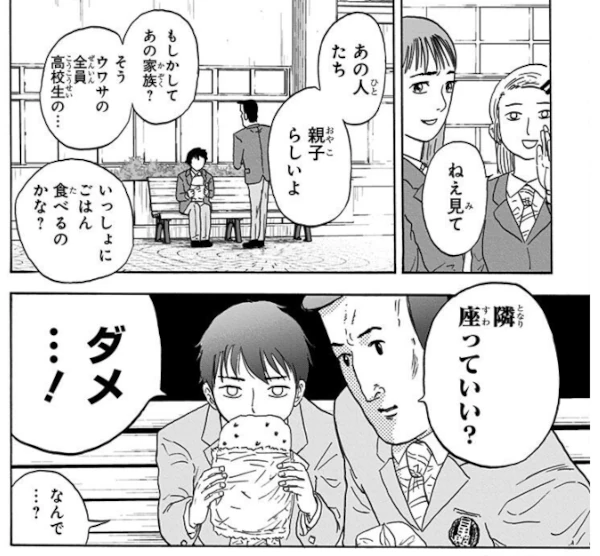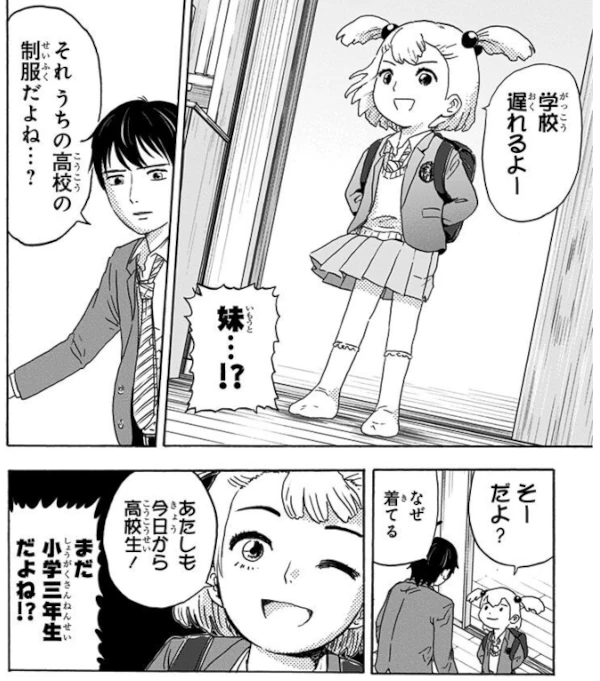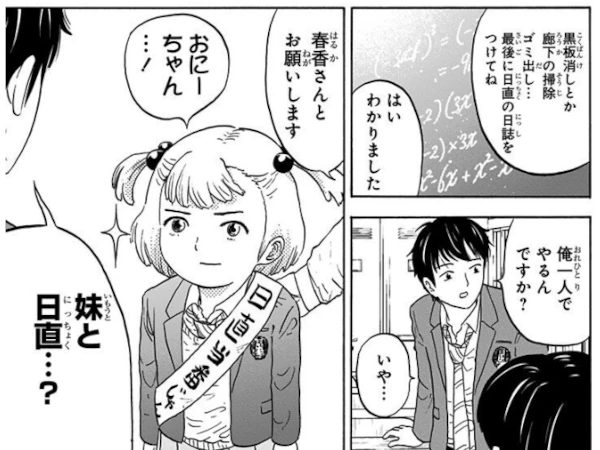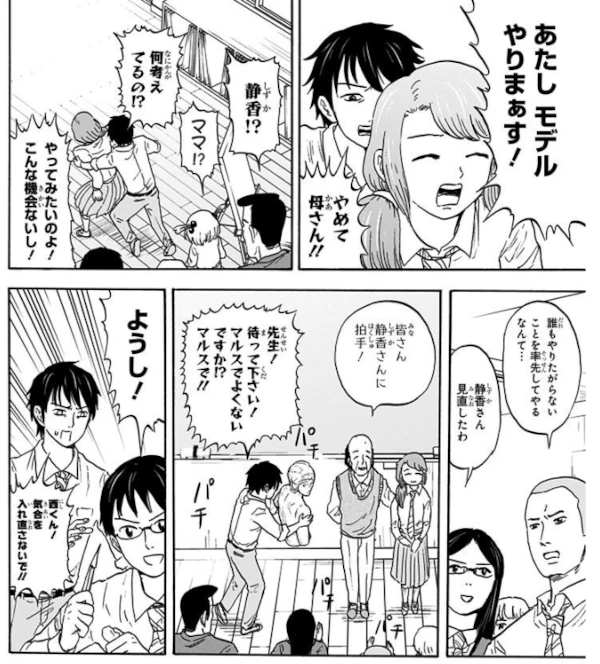This time, we’re introducing Kokosei Kazoku—a lighthearted school-family manga full of everyday Japanese, perfect for learners looking to improve their casual conversation skills.
Work Information

Kokosei Kazoku (高校生家族)
Author: Nakama Ryo
Publisher: Shueisha
Amount of text: plentiful
Challenge level: ★★
Latest volume : Vol.11(Jul.2023 / Completed)
Story overview
This is the shape of a new kind of family.
Spring has arrived… and Koutarou, a boy who has just entered his first year of high school, is filled with anticipation for the refreshing days of his youth. But his high school life is about to be completely wrecked by his own family…!?
Enjoy the laughs from this new genre that blends family comedy with school comedy—something you’ve never seen before!
The Appeal of This Manga
This manga presents a truly unique twist on the typical school life story: a boy finds himself attending high school alongside his entire immediate family—his father, mother, and younger sister. This wildly unconventional premise is central to the narrative, which humorously, absurdly, and at times touchingly depicts their shared academic journey. The sheer novelty of having your actual family members as classmates creates a distinctive and often hilarious dynamic, offering readers an experience unlike anything they’ve encountered before.

Why this manga is suitable for learning Japanese
This manga is not only entertaining but also highly recommended for Japanese learners for several reasons.
Packed with everyday conversations set in a high school
Since the main focus is on school life, the story features plenty of everyday conversations between family members and classmates at school (with occasional conversations at home). The dialogue is concise and easy to understand, making it ideal for beginners learning Japanese.

Furigana for all kanji characters
In Shueisha manga, all kanji characters come with furigana (reading guides). This makes it easier for Japanese learners who struggle with reading kanji, allowing them to focus on the storyline without needing to look up every kanji reading.

Phrase Spotlight
「“Nitchoku”: A Classroom Duty Full of Culture, Language, and Sometimes… Romance?妹と日直…?

In a scene from a school manga, a student’s heart skips a beat when they find out:
「今日、日直……あの子と一緒だ……!」 “Today’s class duty… I’m paired with that girl…!”
This brief moment captures not only the nervous tension of a teenage crush but also introduces a uniquely Japanese school tradition: nitchoku (日直), or “daily classroom duty.” Though seemingly simple, this role is a window into Japanese values, school culture, and even language evolution.
What Is Nitchoku?
In many Japanese elementary, junior high, and high schools, students take turns serving as nitchoku—a rotating daily responsibility usually shared by one or two classmates. Duties typically include:
・Greeting the teacher at the beginning and end of class
・Taking attendance
・Managing the blackboard or classroom materials
・Making announcements or reading school news
The nitchoku role is not optional; it is an expected part of student life and is taken seriously, helping foster responsibility, teamwork, and respect within the classroom.
A Word Rooted in Watchfulness
The word 日直 is composed of two kanji: 日 (day) and 直 (direct, duty). The idea is that the student on nitchoku is in charge “for the day.” Interestingly, this word shares a structural similarity with other Japanese duty-related terms such as:
・当直 (tōchoku) – on-duty, usually for doctors or night-shift workers
・宿直 (shukuchoku) – overnight duty, often used in schools or dormitories
While tōchoku and shukuchoku imply more serious or adult responsibilities, nitchoku represents a child’s first encounter with collective responsibility—a small but meaningful way Japanese education instills social awareness.
A Common Trope in Manga—and Real School Life
In school-themed manga and anime, nitchoku often appears as a storytelling device. Being paired with your crush, for example, creates awkward but cute moments, or a chance for accidental connection. This mirrors how students in real life may feel—nervous, excited, or even competitive about who they end up doing nitchoku with.
For this reason, understanding nitchoku can also help learners appreciate the emotional nuances of school-centered Japanese fiction.
Why It Matters for Japanese Learners
For students of Japanese, nitchoku is a useful and culturally loaded term. It reflects key aspects of Japanese social values:
・Rotational responsibility
・Group harmony (wa)
・Early socialization into community roles
By learning about nitchoku, learners can better understand how Japanese children are gradually taught to act as responsible members of a group—a principle that often extends into adult work culture.
Summary
The concept of nitchoku may seem small, but it plays a big role in shaping the school experience in Japan. Whether you encounter it in manga or in real life, knowing what it means—and what feelings it can stir—offers valuable insight into Japanese culture, both linguistic and social. And who knows? You might even get a glimpse into how romance and responsibility sometimes go hand in hand in a Japanese classroom.
A Little Warning
A large amount of dialogue
Since it’s a gag manga, there are quite a few cases where the panels are filled with dialogue. Because of this, beginners in Japanese language learning might feel overwhelmed by the large amount of text.

Work Information

Kokosei Kazoku (高校生家族)
Author: Nakama Ryo
Publisher: Shueisha
Amount of text: plentiful
Challenge level: ★★
Latest volume : Vol.11(Jul.2023 / Completed)
Here’s a safe and convenient way to purchase Japanese manga.
This Blog’s ConceptIn this blog, we are introducing manga that are not only highly captivating but also ideal for Japanese language learners. Studying Japanese through manga is both fun and effective. Manga allows you to understand the subtleties of keigo (honorifics), teineigo (polite speech), and casual conversation in Japanese. We hope you find works that match your interests and use them to enhance your Japanese learning journey.